

Beeblossom, or gaura, is an easy-growing perennial plant with minimal care.
Beeblossom or gaura key facts
Name – Gaura lindheimeri
Family – Onagraceae (Willowherb)
Type – perennial
Exposure – full sun, part sun
Height – 26 to 32 inches (0.6 to 0.8 meters)
Soil: well-drained – Foliage: deciduous – Flowering: end spring → early fall
It gifts us beautiful and durable blooming, two seasons long!
Plant in spring or fall, in a spot well-sheltered from wind.
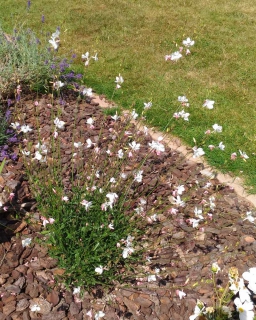
Propagate through cuttings in spring and at the end of summer or through crown division in fall.
Note that crown division isn’t very easy because root are a type of taproot. The clump must be really large before you can split it.
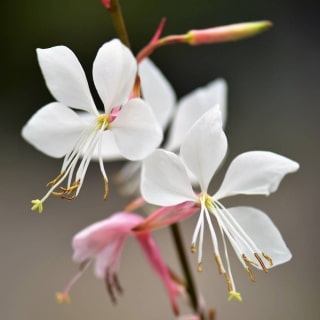
Pots that are deeper than they are wide are better, unless they’re already 1 foot (30 cm) deep to begin with.
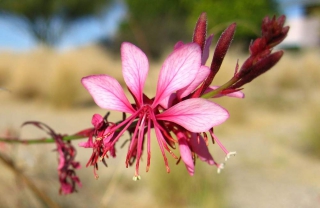
Eliminate wilted flowers regularly, cutting off the entire stem.
At the end of winter or in fall, cut back all the flower stems before the vegetation phase returns.
Gaura is a plant that needs lots of water to truly thrive.
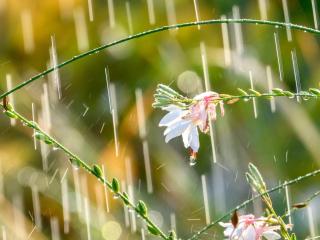 When in a pot, it’s important to water as soon as the soil is dry at the surface.
When in a pot, it’s important to water as soon as the soil is dry at the surface.If stems start drying out, it means your beeblossom needs more water.
As is the case for most flower plants, beeblossom will grow much better and have longer-lasting blooms if you feed it well.
Adding nutrients to the soil around it will boost blooming from spring to fall.
A very cute perennial with abundant blooming that constantly renews itself from spring to fall, Gaura is relatively easy to grow.
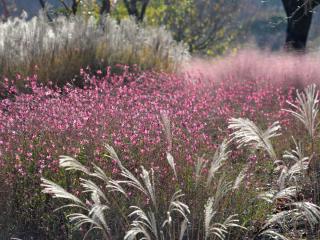
Particularly melliferous, beeblossom offers magnificent flowers in white and pink tones that will provide joy and light to your garden.
Mulch derived from cocoa hulls or pine bark mulch (shown above in the planting section) is perfect when paired with this plant, and it will hinder weed growth, too.